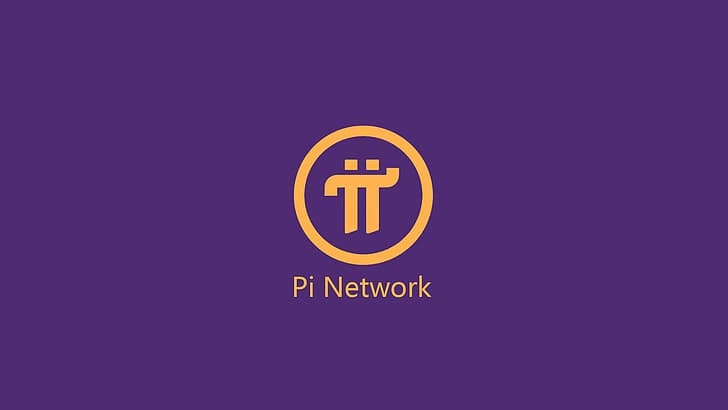The cryptocurrency space continues to evolve with new and innovative projects, and Pi Network has emerged as one of the most talked-about platforms. With its promise of allowing users to mine Pi tokens directly from their smartphones, Pi Network has gained widespread attention, especially among users who are new to crypto mining.
In this article, we’ll break down what Pi Network is, explore its total supply, and provide the latest price prediction based on market sentiment and project fundamentals. Whether you’re a seasoned crypto investor or a beginner looking for insights, this guide will give you a well-rounded understanding of Pi Network’s potential.
What is Pi Network?
Pi Network is a decentralized cryptocurrency project that aims to make crypto mining accessible to everyone. Developed by a team of Stanford graduates in 2019, Pi Network stands out by allowing users to mine Pi coins using mobile devices without draining battery life or consuming significant processing power.
The project’s primary mission is to bring blockchain and cryptocurrency adoption to a global audience by simplifying the mining process. Unlike Bitcoin and Ethereum, which require power-intensive mining rigs, Pi Network focuses on mobile-first mining, making it more user-friendly and eco-conscious.
The core concept revolves around Proof of Consensus (PoC), Pi Network’s unique consensus algorithm. PoC enables users, referred to as “Pioneers,” to contribute to network security and growth by simply engaging with the app daily.
Key Features of Pi Network:
- Mobile Mining: No need for high-end mining hardware.
- Eco-Friendly: Minimal energy consumption compared to traditional mining.
- Community-Driven: Over 47 million users worldwide, creating a large and active user base.
- KYC Process: Ensures real-user participation through identity verification.
- Mainnet Launch: Pi Network is transitioning towards a fully operational mainnet phase.
Pi Network’s Development Stages
Pi Network’s roadmap has several stages, each designed to gradually bring the platform from beta testing to full blockchain deployment. Here’s a quick look at these phases:
- Phase 1 – Beta Launch (2019): The app was introduced to early adopters for mining Pi tokens in a closed environment.
- Phase 2 – Testnet (2020-2021): Testnet went live to simulate transactions and smart contracts.
- Phase 3 – Mainnet (Launched in late 2021): The closed mainnet was introduced, allowing KYC-verified users to transfer Pi tokens within the Pi ecosystem.
- Phase 4 – Open Mainnet (Expected in 2025): The much-anticipated full public mainnet is expected to bring external exchanges, DApps, and broader adoption.
Pi Network Total Supply: How Many Pi Coins Exist?
One of the most important metrics in evaluating a cryptocurrency is its total supply. Pi Network has an initial total supply cap of 100 billion Pi coins. However, it’s worth noting that Pi’s supply is inflationary in its early stages due to mining rewards, but these rewards reduce over time based on network activity and user participation.
Pi Supply Breakdown:
- Mining Rewards: Distributed to users who mine daily.
- Development Fund: Reserved for the core team and future project development.
- Community Rewards: Allocated to support ecosystem growth, partnerships, and initiatives.
It’s also important to mention that Pi Network is still in its enclosed mainnet phase, meaning Pi tokens are currently only transferable within the Pi ecosystem. Once the open mainnet goes live and external exchanges begin listing Pi, we will have a clearer picture of circulating supply and market capitalization.
Is Pi Network Listed on Major Exchanges?
As of now, Pi tokens are not yet officially listed on major centralized exchanges (CEXs) like Binance, Coinbase, or Kraken. Some decentralized exchanges (DEXs) and unofficial platforms have created IOUs (I Owe You tokens) representing Pi, but the Pi Network team has cautioned users against transacting these unofficial listings.
The project’s official team has made it clear that Pi will only be tradable on exchanges following the open mainnet launch, projected to occur sometime in 2025. Until then, Pi holders can interact within the Pi ecosystem and use tokens for limited services such as Pi-based apps and merchant transactions in the enclosed mainnet.
Pi Network Price Prediction: What’s Next for Pi?
Without official exchange listings or a confirmed circulating supply, predicting Pi Network’s exact price is speculative. However, based on community hype, early interest, and the network’s growing user base, Pi Network shows potential for strong adoption once it becomes fully tradeable.
Short-Term Pi Price Forecast (Post-Open Mainnet)
- Conservative Estimate: $5 to $15 per Pi token
- Optimistic Estimate: $20 to $40 per Pi token
This range depends on factors such as:
- Demand upon open mainnet launch
- Partnership announcements
- Global adoption rate
- Exchange listings
Long-Term Pi Price Forecast (2026 and beyond)
- Conservative Scenario: $50 to $75
- Bullish Scenario: $100 or higher if Pi Network becomes a widely used decentralized application (dApp) platform with strong utility.
Key Factors That Will Impact Pi’s Future Price:
- User Base Growth: With over 47 million engaged users, Pi Network has the advantage of a ready-made community that can drive adoption.
- Utility: The ability to use Pi tokens in decentralized apps, marketplaces, and for peer-to-peer payments will directly affect demand.
- Institutional Interest: If Pi garners attention from institutional investors or large partnerships, the token could benefit from heightened liquidity.
- Open Mainnet Success: Smooth integration with exchanges and third-party apps will play a crucial role in price discovery.
Is Pi Network Legit?
Pi Network is widely regarded as a legitimate project, but it has also faced skepticism. While the app is free to use and does not require users to spend money to mine, critics point out that the token’s value is still unproven due to its lack of official exchange listings.
The project’s team has been transparent about its phased approach, focusing first on building a robust community before launching a full-fledged blockchain platform. So far, Pi Network has avoided the hallmarks of scams, such as mandatory purchases or pyramid schemes.
That being said, due diligence is crucial, and users should avoid transacting Pi tokens outside the official Pi ecosystem until open mainnet trading is available.
What’s Next for Pi Network?
Looking ahead, the future of Pi Network hinges on its open mainnet launch, expected sometime in 2025. The team has also hinted at expanding its ecosystem by encouraging developers to build Pi-based dApps and services that will increase the real-world utility of Pi tokens.
Additionally, the project is fostering partnerships with merchants who will accept Pi as payment within the enclosed mainnet, further preparing the network for external integration.
Upcoming Milestones:
- Full-scale open mainnet release
- Listings on major cryptocurrency exchanges
- Expansion of Pi-powered dApps and marketplace
- Potential collaborations with fintech platforms and merchants
Final Thoughts
Pi Network is a unique and ambitious project that seeks to democratize cryptocurrency mining by making it accessible to everyday smartphone users. While its total supply of 100 billion tokens and ongoing mainnet development present challenges, Pi Network’s growing community and commitment to long-term growth position it as a project to watch closely.
Although price predictions remain speculative until Pi reaches external markets, there’s no denying the momentum Pi Network has built. Whether Pi becomes the next big player in crypto or a niche ecosystem, its mobile-first mining model and global user base make it one of the most exciting projects in the space.



